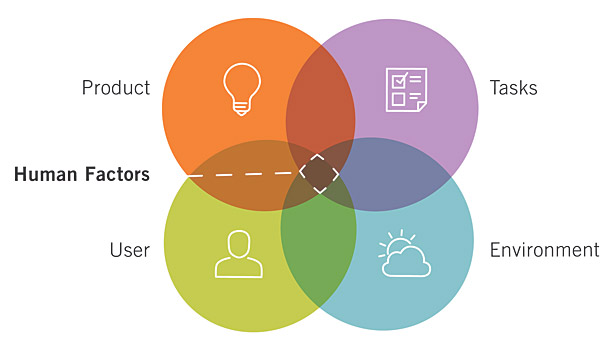Product Design Engineering on Human Integrated Systems-Perspectives
Product Design Engineering on Human Integrated Systems-Perspectives
Robert S. Bridger in his scholar work, published in 2018 has indicated mankind interaction with a tool or a machine in modern days.
This article interchangeably refers Human Integrated Systems (HIS), as Human Factor and Ergonomics (HFE).
Furthermore, Bridger elaborates that the mentioned interaction is conducted through an interface (a handle, a steering wheel, a computer keyboard and mouse, etc.). The principal knowledge of HFE depicts how best to design tools and machines. Subsequently, it is enabling to optimize these interactions. Ultimately, its effects are to generate the ambient environmental conditions when the interaction occurs. The objective is to maximize compatibility between system components with the primary focus on the user.
Likewise, Bridger indicates that compatibility between the user and the rest of the system can be achieved at a number of levels: biomechanical, anatomical, physiological, behavioral, and cognitive levels. In order to obtain compatibility, mankind need to evaluate the demands placed by the technological and environmental constraints and consider them against the capabilities of the users.

Figure Source: https://medium.com/human-factors-considered/creating-the-future-with-human-factors-81e52bda2ea
Article Source: Creating the Future with Human Factors
The Human Factors and Ergonomics Society, in recent years, defines Human Factors as a “scientific discipline coped with the understanding of interactions among humans and other elements of a system, and the professional occupations that applies theory, principles, data, and other methods to design that enable to optimize human well-being and overall system performance”. Human Factors capitalizes assorted method to understand what the user needs from a system.
Referring to the above figure on Marc Egeth, the Director of CORE Human Factors and member of HFES, indicated that the discipline domain of Human Factors is “responsible for creating a sustainable human civilization”. He elaborates that the future will be defined by new technologies and the most important requirement of these new technologies is that they need to interact safely with people. Overall, Egeth in his articles in 2014 onward indicates that Human Factors is deemed indispensable for building and planning a more efficient and sustainable world for the future.
To illustrate furthermore, the following video enhances the understanding of Human Integrated System and its applications:
Beginning Engineers Ergonomics https://www.youtube.com/watch?v=JW3gGVwCGUk
Human factors research and design https://www.youtube.com/watch?v=grxsIB1JA9c
Compiled by
Dr. Khristian Edi Nugroho Soebandrija, BSIE, MM.
Binus Aso School of Engineering, BINUS University.
